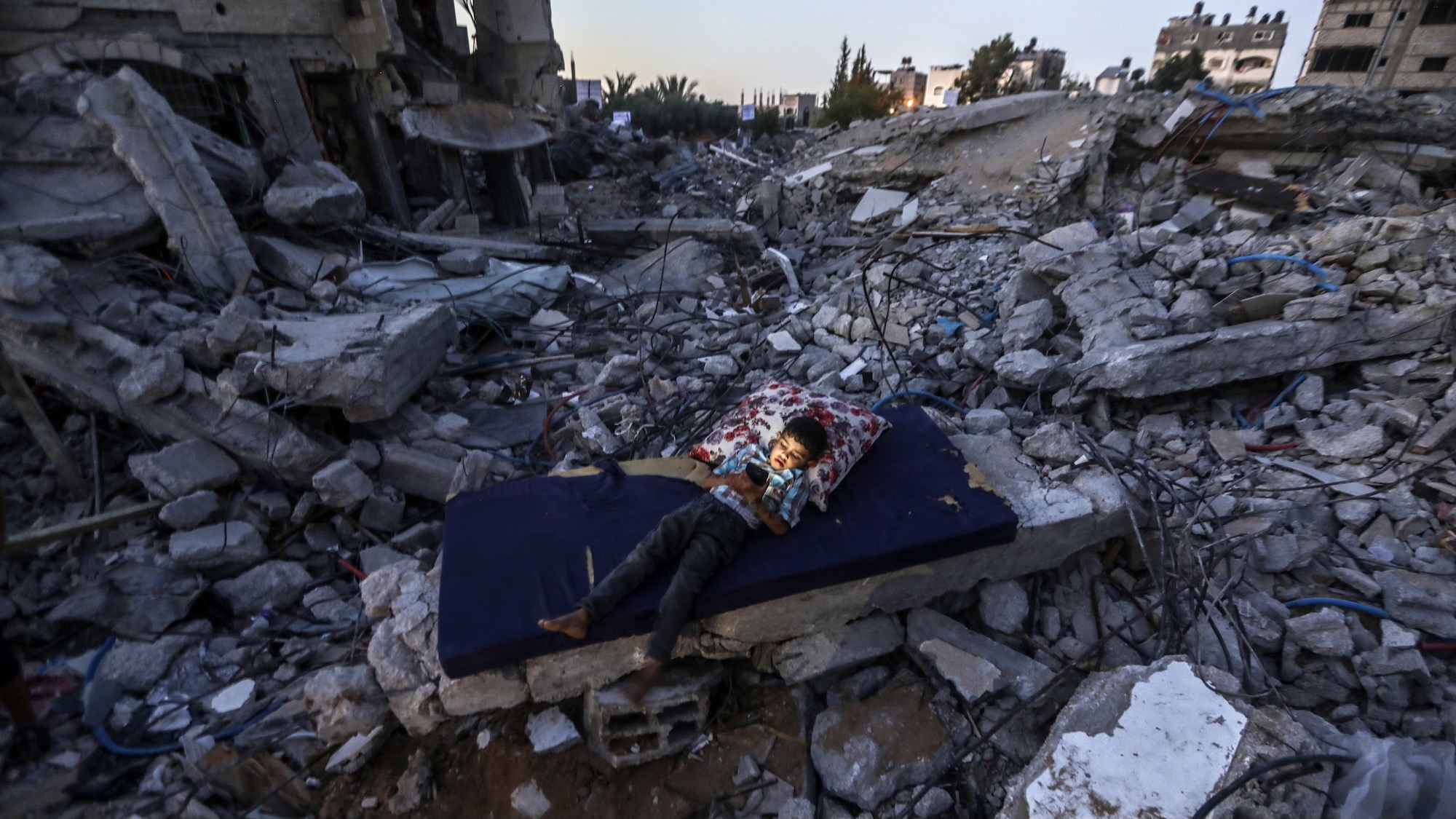Israel deliberately targeted densely populated civilian areas and used deadly explosive weapons indiscriminately during its 11-day airstrikes campaign in May of this year, according to a new report by the UK-based independent war monitoring group Airwars. The UK-based independent war monitoring group released the report on December 9 on the eve of the internationally recognized Human Rights Day.
The report details exactly how more than 200 Palestinians were killed by Israeli bombs dropped on civilian areas, which Israel claimed were targeted at military targets present and operating in those areas. In total, more than 259 Palestinians were killed as a result of the airstrikes, among them 66 children and 41 women. More than 2,200 Palestinians suffered various kinds of serious and life-threatening injuries. Thirteen Israelis were also killed in retaliatory Palestinian rockets fired inside Israel by Palestinian resistance groups acting in defense.
In addition to its revelations regarding the Gaza bombings, the report also shed light on the Israeli airstrikes campaign being conducted in Syria since 2013. It compares Israel’s campaigns in Gaza and Syria, in terms of the relative ‘precision’ with which the Syrian campaign has been carried out and the significantly larger civilian death toll of the Gaza bombings. This would suggest an intentional Israeli policy of causing maximum civilian deaths and damage on Palestinians as a form of collective punishment. For example, the report states that an estimated 14-40 civilians have been killed in the hundreds of airstrikes that Israel has conducted in Syria against air bases, troop convoys, and weapons stores since 2013, which Israel claims are allegedly against Iranian and Hezbollah targets.
In contrast, up to 10 times more Palestinian civilians were killed in just the 11 days airstrikes in May this year than the total civilian death toll of Israeli airstrikes in Syria in the last eight years. The report added the glaring detail that most of the airstrikes in Syria were conducted far away from built-up civilian areas such as cities and towns, making civilian casualties less likely. In Gaza, even with the full knowledge that it is one of the most densely populated areas on earth, the Israeli military went ahead without regard to the risk of causing civilian casualties and damage, conducting more than 1500 air and artillery strikes in the short span of 11 days.
Among the examples cited in the report include one instance in which 41 civilians, including 18 children, were killed in airstrikes on the residential al-Wahda street. The Israeli military had claimed the attack was aimed to destroy a tunnel network being used by the Palestinian resistance group Hamas.
Another attack on civilians that was cited took place at a home in the Al-Shati refugee camp in Gaza, killing two mothers, sisters-in-law, eight children aged 5-14. One five month-old infant was later rescued alive after being found in his mother’s arms. Alaa Abu Hattab, who had gone to the local market for Eid shopping, escaped the attack but lost his wife, sister, children and nephews/nieces in the attack. Abu Hattab told Airwars, “there were no militants in or near my house and no rockets or rocket launchers there. I still don’t know why they bombed my house and killed my wife and children and my sister and her children.”
The report states that close to 300 people were killed during the course of the 11 days of the Gaza bombings, substantially more than the earlier reported death toll. One alarming fact revealed by the report was that in more than 70% of the reported attacks that killed civilians had no corresponding reports of militants hit alongside them, meaning that civilians were the only victims. In addition to the devastating death toll, the bombings also completely destroyed more than 1000 residential units, dozens of hospitals, clinics, schools etc. This worsened the dire humanitarian crisis that the tiny Palestinian territory of Gaza has been living with for the last 14 years as a result of the Israeli-Egyptian blockade in place since 2007.
Chris Woods, director of Airwars while speaking on the report, told news outlets, “we are confident the report will add to a growing body of research showing that when you carry out attacks with explosive weapons in heavily populated areas the overwhelming majority of those killed are civilians. This has been documented time and again – it is almost one of the laws of modern warfare.”
Concluding the findings of the report, director Chris Woods was quoted as saying, “Our latest study corroborates what we have found with other large-scale conflicts in Iraq, Syria, and elsewhere: Even technologically advanced militaries kill large numbers of civilians when attacks focus on urban centers. Stark differences in civilian deaths and injuries from Israeli actions in Syria and in the Gaza Strip clearly illustrate that the most significant driver of civilian harm remains the use of explosive weapons in populated areas. The single most effective way to reduce the number of civilians dying in warfare would be to restrict the use of such dangerous wide-area effect weapons.”





